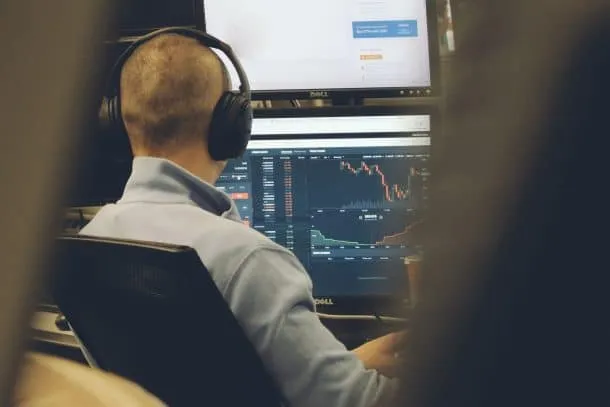Capital Needed to Start Trading Stocks for a Living

Many people who want financial independence and the freedom to work from any location aspire to make a living by trading stocks. However, the quantity of money needed to begin trading is one of the most important factors to consider before starting this adventure. This article will explore the various trading strategies, the factors affecting the required capital, and useful advice for budding traders.
Read More: How to earn $1000 per day in Trading: Beginner’s Guide 2024-25
1.Knowing the Fundamentals of Capital Trading
first Investment: Depending on personal objectives, trading tactics, and risk tolerance, the first investment needed to start trading stocks varies greatly. Because of the Pattern Day Trader (PDT) rule, it is generally advised to have at least $25,000 for day trading in the United States.
This regulation requires traders to keep a minimum balance of $25,000 in their brokerage account if they execute four or more day trades in a five-day period. Long-term investors and swing traders, however, might be able to begin with less.
Brokerage costs: Brokerage costs must be taken into account when figuring out how much money is required to begin trading.Even though commission-free trading is now available at many brokerages, some may still levy fees for each trade, which can mount up quickly. To cut expenses, it’s critical to choose a brokerage that complements your trading frequency and style.
Margin Accounts: In order to trade greater positions than their cash balance would allow, some traders decide to open a margin account, which enables them to borrow money from their broker. This raises risk even as it can enhance income. Be mindful of the initial and maintenance margin requirements if you choose a margin account, as these can further affect the required capital.

2. Can trading make me a billionaire?
Even though trading can lead to substantial riches, it is extremely uncommon and difficult to become a billionaire by trading alone. Proficient traders frequently have strong analytical abilities, a thorough comprehension of market dynamics, and the capacity to properly manage risk.
The majority of financial industry billionaires have amassed their fortunes over time via a combination of trading, investment, entrepreneurship, and strategic decision-making. Unpredictable events and market volatility can also result in significant losses, making steady profitability challenging.
While some people, like professional traders and hedge fund managers, have made fortunes from trading, the great majority of regular traders do not achieve such success.
In the end, trading necessitates commitment, knowledge, and frequently a diversified strategy that goes beyond merely purchasing and disposing of assets, even though it might result in significant financial success.
3. Factors Affecting the Need for Capital
1.Style of Trading
The quantity of capital needed varies depending on the trading method. Three typical trading techniques and the capital concerns associated with them are as follows:
- Day Trading: Day traders frequently make several deals during the day, buying and selling equities inside the same trading day. Because this technique necessitates larger buying power and margin needs, it usually demands more funds. Pattern day traders in the United States are required by the Financial Industry Regulatory Authority (FINRA) to keep a minimum equity balance of $25,000 in their trading accounts.
- Swing Trading: The goal of swing traders is to profit from short- to medium-term market changes by holding positions for a few days or weeks. Compared to day trading, this strategy typically involves less capital. For swing trading, a starting capital of $5,000 to $10,000 may be adequate, enabling traders to efficiently control risk while pursuing fair returns.
- Long-Term Investing: Long-term investors usually purchase stocks and keep them for years at a time. In the short run, this strategy calls for less capital commitment and less frequent trading. A $10,000 or greater initial investment might serve as a strong basis for gradually constructing a diverse portfolio.
2. Controlling Risk
Long-term trading success requires effective risk management. The level of risk a trader is ready to accept per trade will determine how much capital is required. Generally speaking, you should never risk more than 1% to 2% of your entire trading capital on a single trade. For instance, taking a 1% risk on a $10,000 trading capital would limit your possible loss to $100 every trade. This strategy permits trading to continue even after losses and aids in capital preservation.
Conclusion:
In conclusion, depending on personal objectives, trading tactics, and risk tolerance, the initial investment needed to begin trading stocks for a living varies greatly. Some traders could need a larger investment to support themselves over time, while others might start with as little as a few thousand dollars. The cost of living, trading style (day vs. long-term), and the significance of having enough capital to sustain losses and prevent margin calls are important factors to take into account.
FAQs:
1. What is the minimum amount of money required to begin trading stocks?
Although the required money might vary substantially, many experts advise beginning with at least $10,000 to $25,000 for active trading. Better risk management and the capacity to withstand any losses are made possible by this range.
2. Is it possible to begin stock trading with a little sum of money?
Indeed, you can begin trading with smaller sums—as little as $1,000. Starting with less money, however, can make it more difficult for you to adequately manage risk and could lead to larger percentage lossesz
3. What elements influence the amount of capital needed to trade?
Your trading strategy (day, swing, or long-term investing), risk tolerance, living expenses, and the stocks you plan to trade are some of the variables. Generally speaking, more capital is needed for more aggressive trading
4. Does day trading have a minimum capital requirement?
In order to execute more than three day trades in a rolling five-day period, pattern day traders in the United States are required by the Financial Industry Regulatory Authority (FINRA) to keep a minimum balance of $25,000 in their brokerage account.



